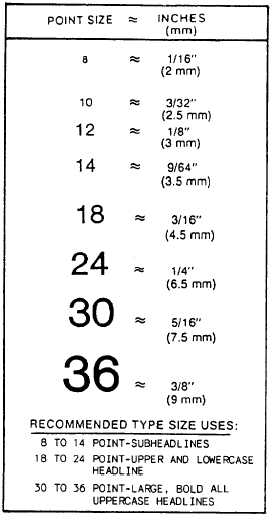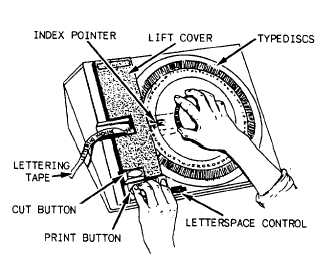from all foreign matter and that the tracer pin
does not cut into the sides of the grooves. In order
to form perfect letters every time, you must make
sure that the tracer pin slides along the grooves
smoothly. When small templates are used, a small
sharp tracing pin must be inserted in the scriber.
If a sharp tracing pin is used in the larger
templates, the grooves of the templates will be
damaged.
LETTERING SYSTEM
Today’s operating units, training commands,
and shore establishments within the Naval
Construction Force (NCF) have a great demand
for quality graphics to enhance command
presentations during management and readiness
inspections and during execution and completion
reports.
The bulk of the job is commonly handled by
the engineering department or branch. As an EA,
you will be tasked with producing a variety of
quality signs, labels, lettering, tags, and other
miscellaneous requests.
It is likely that your office may already have
one of the lettering machines used for this job.
The pressure lettering machine (fig. 3-60) is just
one of the typical tools that produces high-quality
lettering faster than press-on type letters and the
mechanical letters. This machine uses a pressure
process to transfer dry carbon impressions onto
a variety of tapes that are used for producing
letters, numbers, and symbols. The impressions
are made from raised characters on an inter-
changeable type of disc available in different
styles, ranging in size from 8 points to 36 points
Figure 3-60.-Typical pressure lettering machine.
Table 3-1.-Size Range of Impressions Made from Char-
acters Used on a Lettering-System Type of Disc
(table 3-1). Overall, this machine is easy to use.
Daily operation and on-the-job training will
enhance your efficiency.
DRAWING REPRODUCTION
One of the most important skills an EA needs
to learn besides drafting is operating reproduction
equipment or machines. The quality of a
reproduced copy (usually called BLUEPRINT)
measures the accuracy, completeness, and
conformance to applicable standards of an
original or traced drawing. All EAs therefore
should be familiar with the aspects of performing
this skill and should develop competency through
practice and experience. This section discusses the
3-41




